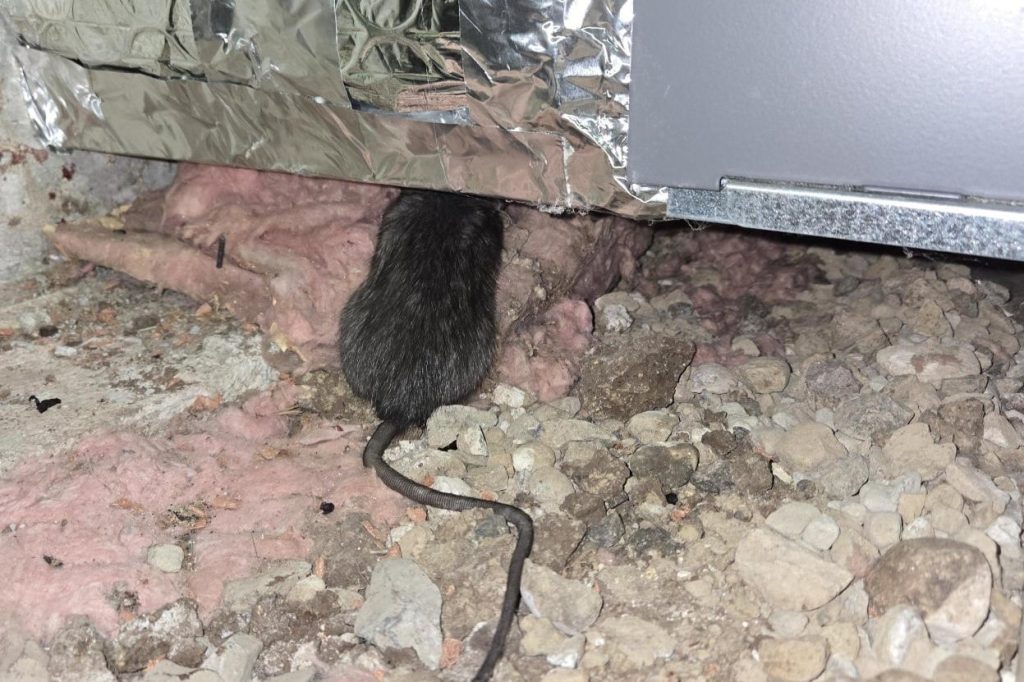A Guide to Dealing with Rodents Dying in Your Walls or Crawlspace
An unpleasant, lingering odor in your home can quickly become a source of frustration and discomfort. Sometimes, the smell could be caused by mildew, a plumbing issue, or even a busted waste line.
However, for the purposes of this article, we’re going to assume that the culprit is something you can’t see but can certainly smell: a rodent that has died in your walls or crawlspace. While this might not be the most pleasant topic, understanding why the smell happens, how to locate it, and what steps to take can help you tackle the issue effectively—and keep it from happening again.
Key Takeaways
- Rodents can die in hidden spaces, leaving behind an unmistakable odor.
- Locating and removing the carcass is crucial to eliminating the smell. It can also be the most difficult step.
- Preventative measures can help you avoid dealing with this issue in the future.
Why Does It Smell So Bad?
When a rodent dies, its body begins to decompose, releasing gases that produce a pungent odor. The smell can linger for days or weeks, depending on factors like the size of the animal, the environment, and how long it’s been there. Beyond being unpleasant, these odors can also attract other pests, making prompt action essential.
Signs a Rodent May Be the Cause
If you’re not entirely sure what’s behind the foul odor in your home, here are a few clues pointing toward a dead rodent:
- Localized Odor: The smell is strongest in one specific area of your home.
- Increased Pest Activity: Flies or beetles may gather near the source of the smell.
- Past Noises: You might have heard scratching or scurrying in the walls prior to the smell.
Steps to Address the Problem
- Pinpoint the Source: Locating the exact location of the dead rodent is the first step:
-
- Follow the Smell: Trace the odor to its strongest point. Is it constant or does it fluctuate? Does it only smell during certain times like when the dryer is running or maybe when the furnace kicks on?
-
- Inspect, Inspect, Inspect: Check crawlspaces, attics, wall voids, and other hidden spaces. A flashlight is your best friend for inspecting, but you can get other tools also. They even have borescopes for looking inside walls that hook up directly to your phone!
-
- Look for Visual Clues: Stains on walls or ceilings can sometimes indicate the location. It’s gross…but it’s also true.
- Remove the Carcass: Once you’ve located the source, it’s time to remove the body, and this can be the most difficult part honestly. Unfortunately, this can sometimes involve cutting through building materials like drywall or venturing into tough spots like the space above insulation in a crawlspace.
-
- Consider Accessibility: If the carcass is in a wall or ceiling, you may need to cut an access point. If it’s in a subarea above insulation, be prepared to move or temporarily remove sections of insulation.
-
- Wear Protective Gear: Gloves and a mask are essential to protect yourself from bacteria and parasites. Using a respirator that is rated to filter organic vapors will even keep the smell out, so yeah, that’s a bonus. Eye protection may also be needed if you are cutting or drilling to gain access, or if you are moving insulation.
-
- Carefully Extract It: Use tools to remove the carcass without direct contact. Pro Tip: If you suspect there may be multiple carcasses, be thorough in your search to remove them all.
-
- Brace yourself for the odor. The smell can intensify as soon as you disturb the carcass, be ready for it!
-
- Dispose Properly: Seal the carcass in a plastic bag and follow local disposal guidelines.

An unfortunate find: A dead rat concealed within attic insulation, just beneath a heating duct.
- Clean the Area: After removing the rodent:
-
- Sanitize Thoroughly: Use a disinfectant to clean the affected area and eliminate bacteria.
-
- Deodorize: Odor-neutralizing products can help remove lingering smells. Bac-A-Zap is an odor eliminating spray that can be used right where the carcass was located. Products like Earth Care’s Odor Remover Bag can help quicken the return to normal smelling air by hanging them in effected rooms. .
-
- Inspect for Damage: Check for any gnawed wires, insulation damage, or entry points.
-
- Repair the access point. Patch up any holes that you had to make in walls, ceilings, or floors.
When to Call a Professional
In some cases, locating a dead rodent can be more challenging than expected. If you are having trouble locating or getting access the odor source, trying working with a professional.
Pest control experts should be able to:
- First, recognize the difference between something dead and other possible odor sources (mildew, sewage, moisture issues, etc.)
- Use tools and experience to pinpoint the exact location of the odor source.
- Access the carcass for removal.
- Safely remove the carcass and sanitize/de-odorize the area.
- Identify and seal entry points to prevent future issues.
Preventing Future Problems
The best defense is a good offense. Take these preventative steps to avoid dealing with dead rodents in your walls or crawlspace again:
- Find and Seal Entry Points: Inspect your home for gaps, cracks, and other openings rodents could use to get inside.
- Reduce Attractants: Store food in sealed containers and clean up crumbs promptly.
- Use Rodent Traps: Place traps in high-traffic areas to catch rodents before they become a problem.
- Schedule Regular Inspections: Professional inspections can help catch and address rodent activity early.
Final Thoughts
Listen, I’ve been in pest control for a long time, and oh the horror stories I could tell you when it comes to dead animal smells. I will spare you the details, but it’s enough to say that dealing with the smell of a dead rodent in your home is never pleasant, but with the right approach, you can resolve the issue and prevent it from happening again.
If you’re struggling to locate the source or need help managing a rodent problem, Good Earth Pest Company is here for you. Reach out anytime for expert solutions that will restore your home’s comfort and peace of mind.



